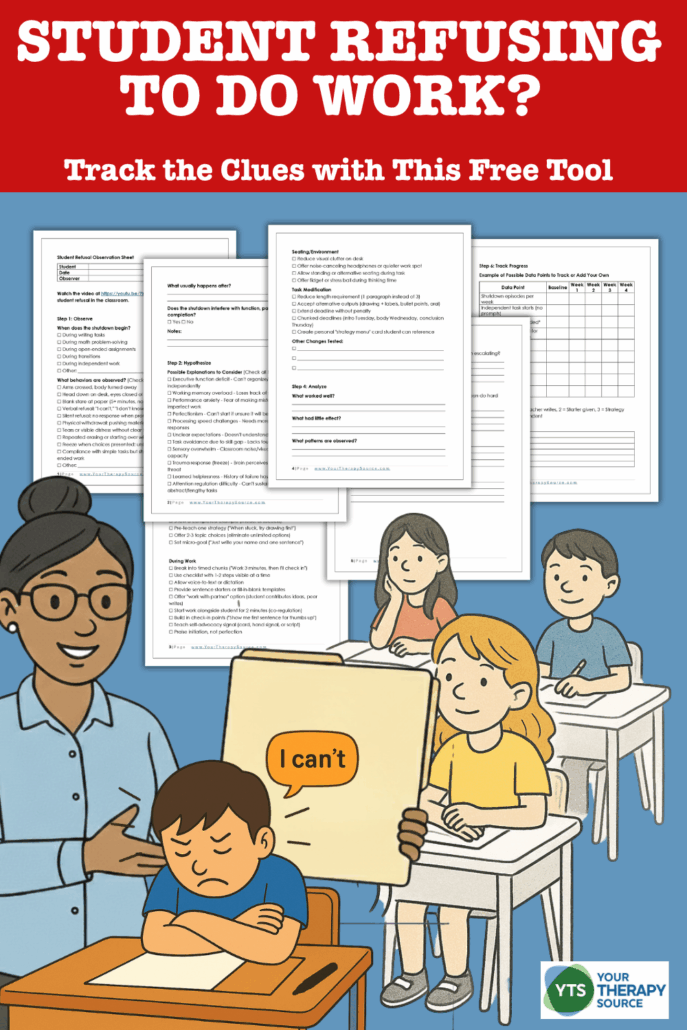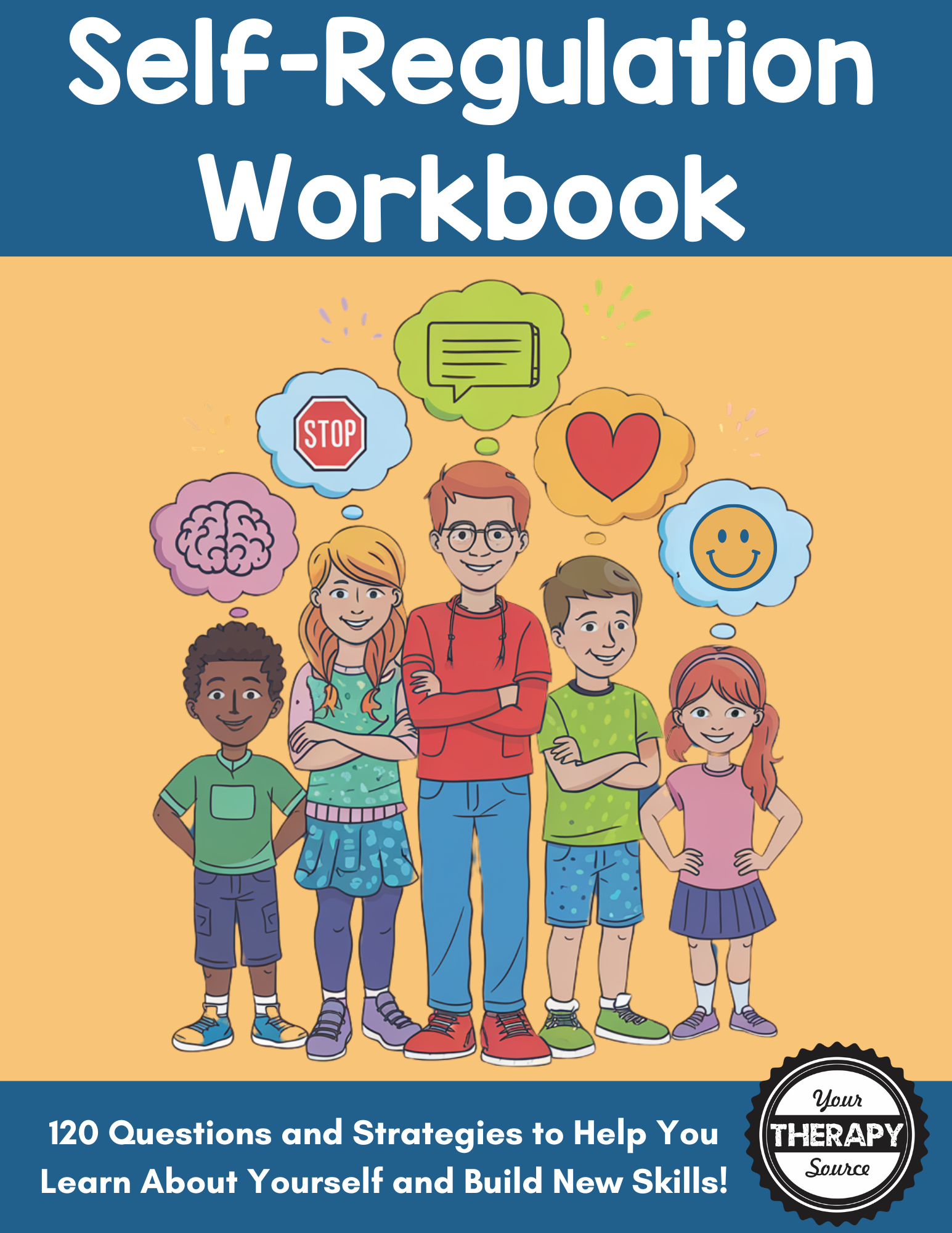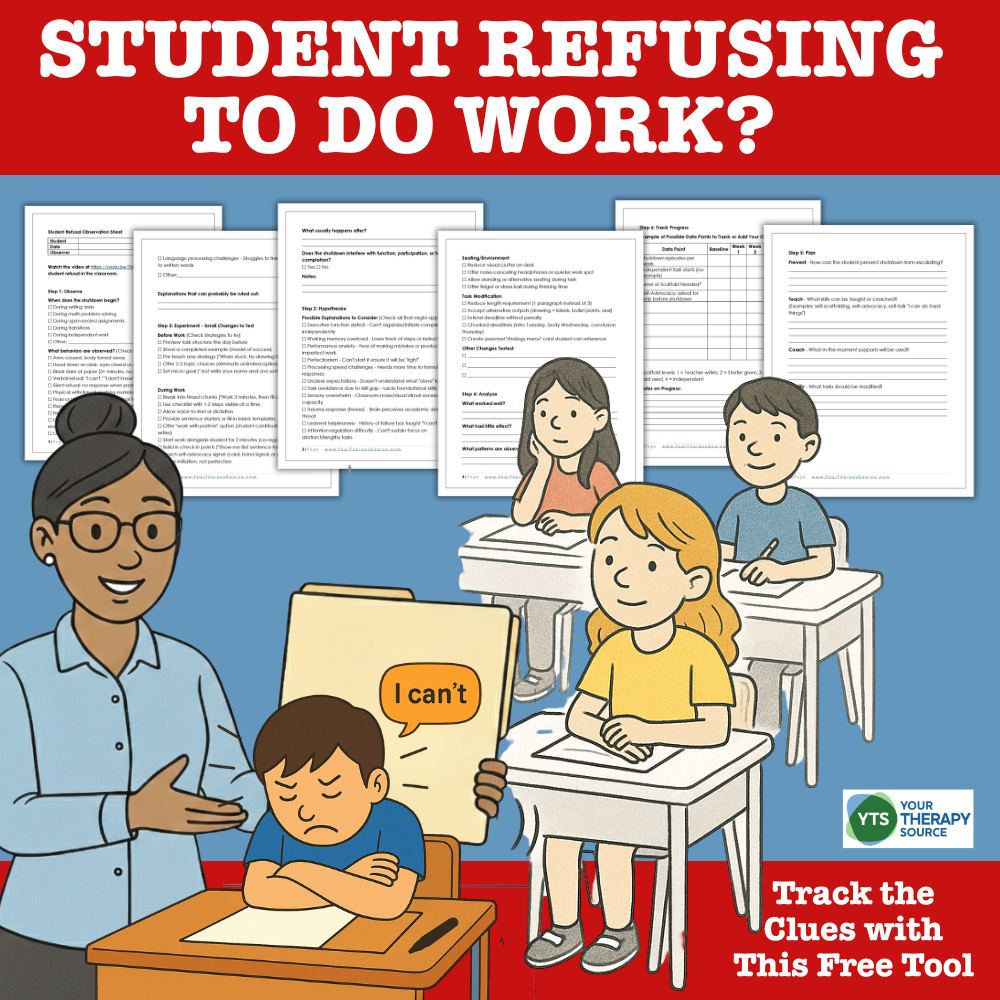Student Refusing to Do Work?
Every teacher has met them: the students who shut down. Arms crossed. Head down. Blank stare at the paper. A quiet “I can’t” or complete silence when you prompt them to start. At first glance, it looks like defiance. But what if that refusal is really a clue? With the right approach, we can decode what’s happening and respond in ways that support learning instead of escalating power struggles. You can download a FREE tool to help understand when a student is refusing to do work and help them succeed at school.

Why Students Refusing to Do Work Aren’t Just Being Defiant
Work refusal often gets mistaken for laziness or disrespect. In reality, many students shut down because their brains are trying to communicate something important. It might be:
- executive function challenges because they can’t organize or initiate complex tasks independently
- working memory overload when multi-step directions feel impossible to track
- performance anxiety because fear of failure creates a freeze response
- unclear expectations when they don’t understand what “done” looks like
- processing speed challenges that make tasks feel overwhelming
- trauma response where academic demands trigger the brain’s freeze mode
Instead of jumping to consequences, it helps to think like a detective. Collect the evidence, test possibilities, and narrow down what the behavior is telling us.
Watch the Video to Uncover the Clues about Student Refusing to Do Work
How to Gather Classroom Clues
Before we can solve the mystery, we need to gather data. This means:
- watching for when shutdowns start (during writing? math? open-ended tasks?)
- noticing what tasks trigger it (multi-step assignments? new material? independent work?)
- recording what happens afterward such as teacher redirection, loss of recess, or zero work completed
- comparing patterns, like noticing that shutdowns appear during essay writing but disappear during structured worksheets
This kind of data helps us separate willful defiance from neurological freeze responses.

Self Regulation Workbook – Learn About Yourself
Probes That Reveal the Truth
Teachers can run small experiments, or probes, to test their theories. Examples include:
- breaking tasks into micro-steps (one sentence at a time instead of three paragraphs)
- offering voice-to-text to eliminate handwriting demands
- providing templates or sentence starters so students know where to begin
- limiting choices (2-3 options instead of open-ended “choose anything”)
- checking in before the task starts to address fears and pre-teach strategies
Some probes will not make a difference, but others can unlock huge insights. Voice-to-text may suddenly eliminate shutdowns, or templates may help the student start confidently.
Free Tool: Track the Evidence Like a Detective
To make this easier, there is a free data collection tool you can use in your own classroom. Think of it like a detective’s case file. It gives you:
- a place to jot down observations of shutdown behaviors
- open-ended prompts to consider different explanations (anxiety? executive function? working memory?)
- space to record probes you have tried and their results
- a 4-layer strategy grid to plan support (Prevent • Teach • Coach • Modify)
- simple ways to track progress over time using scaffold fading and self-advocacy data
Instead of guessing, you will have real evidence to guide your next step.
Turning Shutdowns Into Insights
The case of the shutdown student shows us an important truth: behavior is communication. Work refusal does not mean defiance, and it rarely means laziness. More often, it is the brain’s way of saying “This demand exceeds my current capacity.”
When we track the clues and test small changes, we uncover the real story and we can support our students with strategies that work.
In the end, the goal is not to force compliance. The goal is to understand why they freeze, and help them succeed.
Related Resources:
- Watch the full video: “The Case of the Shutdown Student” on our YouTube channel
- Explore our Child Development: Mysteries Explained video series
- Learn more about executive function strategies for the classroom
Understanding changes everything.
Download Your FREE Shutdown Student Observation Sheet Here
Enter your email to get access to this free data collection form.


